How to keep stink bugs out of the house – according to entomologists
Seal gaps, reduce plants, and use deterrents, pest experts recommend


Although they won't damage your home, with such an alarming moniker, you probably won't be surprised that stink bugs really do stink. For this reason, they certainly don't make welcome guests in any home.
As with any indoor pests, prevention is easier than the cure, and keeping stink bugs out of the house in the first place is far more simple than getting rid of them when an infestation occurs.
Here, entomologists share tips on identifying these common indoor pests, and how to deal with them successfully.
What are stink bugs?
David Price, associate certified entomologist for Mosquito Joe, a Neighborly company, explains, 'Stink bugs are an insect in the order of Hemiptera and are generally called a shield bug or sting bug. They have special glands, and when threatened or crushed they will produce a stinky odor.'
This is where they get their name, but, asides from the foul odor, they do not do any damage to the home. However, the scent can cause an allergic reaction in humans, highlights David. They can also damage crop fields, and are a pest that can destroy plants, such as fruit trees, so this is why it's important to get rid of stink bugs as swiftly as possible.
Why do stink bugs enter your home?
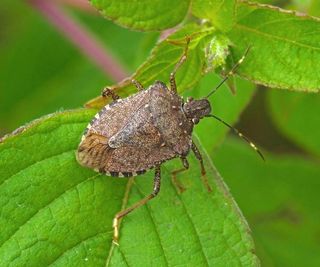
In order to keep stink bugs out, it's crucial to know why stink bugs come into the house in the first place.
Craig Sansig, associate certified entomologist at Viking Pest Control, advises, 'Stink bugs are most commonly encountered in and around homes in the spring and fall. Because stinkbugs overwinter as adults, they seek warmth in gaps and crevices, and within the voids of home to protect themselves from the elements.
'As winter weather fluctuates, they are often seen when temperatures rise, and they attempt to leave the house,' when they may be spotted flying around windows, lights, and even televisions, as they are attracted to light.
Additionally, Dr. Tracy Ellis, entomologist at FarmSense, adds, 'Many go unnoticed until they accumulate in large numbers for overwintering, or if the heat of summer dries down their food,' which is when they may be spotted en masse, collecting at south facing warm walls, or in the shade near water.
How to keep stink bugs out of the house
1. Seal gaps

The very best thing you can do to keep stink bugs out of the house is to seal gaps in windows, doors, and walls to block entry points. Just ensure you know which places you shouldn't caulk around windows, to avoid causing any damage.
Pest expert Craig recommends, 'Conduct a pest proofing inspection on your home. Gaps as small as a quarter inch may admit pests into your home. Utilize appropriate materials to permanently close these gaps to prevent pest entry.
'Pro tip – focus on the sides of the house that receive direct sunlight, as these are the most likely parts of the house to be infested.'
Seal around chimneys, doors and windows, using caulk such as DAP Caulk available at Amazon, and repair or replace damaged screens and worn weatherstripping on garage doors, says Jim McHale, entomologist, CEO & president at JP McHale Pest Management.
'Repair any openings on the foundation due to wear and tear,' he adds, 'and place screens on attic vents.' This can be done with mesh, such as the Stainless Steel Woven Wire Air Vent Mesh available at Amazon, which is rust and heat-resistant.
Finally, entomologist David advises making sure any crawl spaces are sealed with no contact to the outside, and sealing any plumbing, A/C, and gas line gaps using plumber's putty, such as the Oatey Plumber's Putty Sealing Compound available at Walmart.
All prices correct at time of publication.
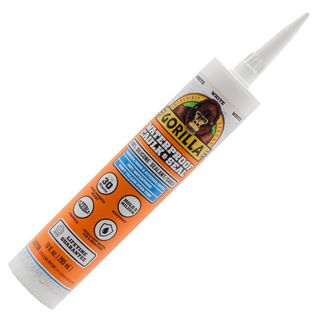
This number one bestselling waterproof caulk is ready for water exposure in as little as 30 minutes, and is suitable for both indoor and outdoor use.
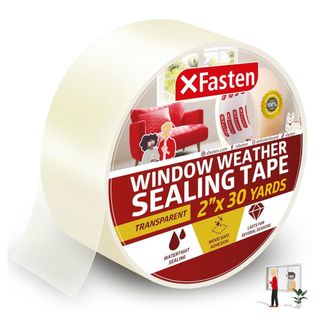
This strong, surface-safe adhesive provides airtight protection, with residue-free professional-finish results.
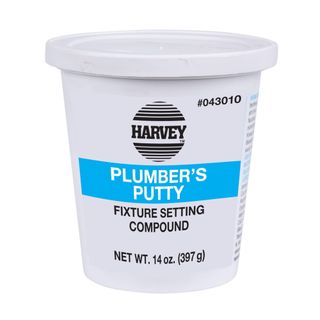
This plumber's putty won't flake, crumble, crack or shrink, and is easy to use and shape for a long-lasting finish.
2. Reduce plants around the house

As pretty as they might look, plants around your home, particularly on doorsteps and windowsills, act as an attractor for stink bugs.
For this reason, pest expert Crag recommends, 'Reduce plants that they feed upon from around your home where possible,' to remove the attraction to your yard, and therefore reduce the number of ways insects are entering your home.
You can also use a homemade bug spray on any remaining plants, such as white vinegar in a Spray Bottle, such as this from Target, which will effectively deter them without causing any damage.
3. Use pesticides

Finally, if you find stink bugs become a recurring problem in your home, pest expert Craig recommends that the application of appropriately labeled pesticides, such as the Bugg Insecticide available at Amazon, may be used to treat entry points around your home.
'The timing of these applications is an important consideration and should be timed so that the products are applied just before peak entry season into the home, which is typically when nighttime temperatures fall below 55 degrees Fahrenheit,' or 12 degrees Celsius, he says
'Due to the potentially large areas of treatment outside and specialized tools needed to apply pesticides in a precise manner, it is often best to call a pro to perform these applications in order to minimize the potential impact of these treatments on people and the environment.'
If you prefer not to use chemicals, you can also use home remedies to get rid of stink bugs. For example, entomologist Jim recommends using mint oil, which emits an aroma that stink bugs hate. 'Spray the oil on plant leaves, in doorways, and on windowsills to repel stink bugs,' he advises.
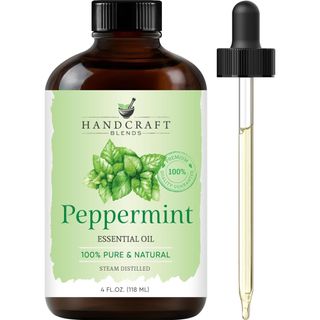
This all-natural essential oil is steam distilled without fillers or additives, for an undiluted premium grade.
FAQs
Where do stink bugs nest?
Stink bugs actually don't nest, instead laying their eggs outdoors on the underside of leaves. They may congregate in groups, but often come inside seeking a quiet area to hide.
They are closely related to kudzu bugs, which is why getting rid of kudzu bugs largely follows the same principles.
Don't forget that a pest infestation doesn't mean you have a dirty home, as clean homes get pests too. The most important thing is making yours as inhospitable for pests as possible.
Sign up to the Homes & Gardens newsletter
Design expertise in your inbox – from inspiring decorating ideas and beautiful celebrity homes to practical gardening advice and shopping round-ups.

Ottilie joined Homes & Gardens last year, after finishing a Master's in Magazine Journalism at City, University of London. With previous contributions in Livingetc and Motorsport Magazine, she produces content for the Solved section on the website, focusing on clever tips and tricks to keep your home beautiful, organized and clean. She also has an undergraduate degree in English Literature and History of Art from the University of Edinburgh, where she developed a love for inspiring interiors and architecture.
You must confirm your public display name before commenting
Please logout and then login again, you will then be prompted to enter your display name.
-
 Is crown molding out of style? Interior designers discuss this classic feature and decide if it has a place in 2025
Is crown molding out of style? Interior designers discuss this classic feature and decide if it has a place in 2025Will we be saying goodbye to the classic architectural feature this year? Interior designers share their thoughts
By Eleanor Richardson Published
-
 Horticulturists urge you to prune these 7 plants in April – for healthy growth and better-than-ever flowering displays
Horticulturists urge you to prune these 7 plants in April – for healthy growth and better-than-ever flowering displaysDiscover a key selection of plants to cut back this month, with expert pruning advice
By Drew Swainston Published
-
 I'm a board-certified entomologist and this is the one rodent infestation control mistake I urge you to avoid at all costs – you'll regret it deeply
I'm a board-certified entomologist and this is the one rodent infestation control mistake I urge you to avoid at all costs – you'll regret it deeplyDon't put your health or home at risk
By Daniel Baldwin Published
-
 5 non-toxic mothball swaps that work – ditch chemicals and that horrible odor with these simple but effective alternatives
5 non-toxic mothball swaps that work – ditch chemicals and that horrible odor with these simple but effective alternativesThey'll protect your clothing and closets from moths without harsh chemicals
By Chiana Dickson Published
-
 5 non-toxic pest control essentials proven to prevent pests humanely – and why avoiding harsh chemicals is a must to keep your family healthy
5 non-toxic pest control essentials proven to prevent pests humanely – and why avoiding harsh chemicals is a must to keep your family healthyNatural pest repellents are more affordable, too
By Chiana Dickson Published
-
 6 ways to prevent mold and damp in bedrooms – expert solutions to maintain a safe sleep environment
6 ways to prevent mold and damp in bedrooms – expert solutions to maintain a safe sleep environmentDon't sleep on these six tips, experts urge
By Seraphina Di Mizzurati Published
-
 6 hidden places pests love to harbor their young – pest control experts reveal how to stop colony growth in your home
6 hidden places pests love to harbor their young – pest control experts reveal how to stop colony growth in your homeYou can stop pests breeding in your home
By Andy van Terheyden Published
-
 How to get rid of pill bugs inside your house and banish them for good
How to get rid of pill bugs inside your house and banish them for goodThough harmless, you won't want a pill bug infestation inside, entomologists warn
By Ottilie Blackhall Published
-
 How to get rid of mice in the attic – banish these pesky invaders for good with these top tips from pest control pros
How to get rid of mice in the attic – banish these pesky invaders for good with these top tips from pest control prosFrom what draws them in to how to get them out – experts reveal everything you need to know about dealing with mice in the attic
By Andy van Terheyden Published
-
 Does vinegar kill ants? Pest control pros reveal relying on this pantry staple is a big mistake
Does vinegar kill ants? Pest control pros reveal relying on this pantry staple is a big mistakeVinegar could cause a bigger pest problem
By Chiana Dickson Published